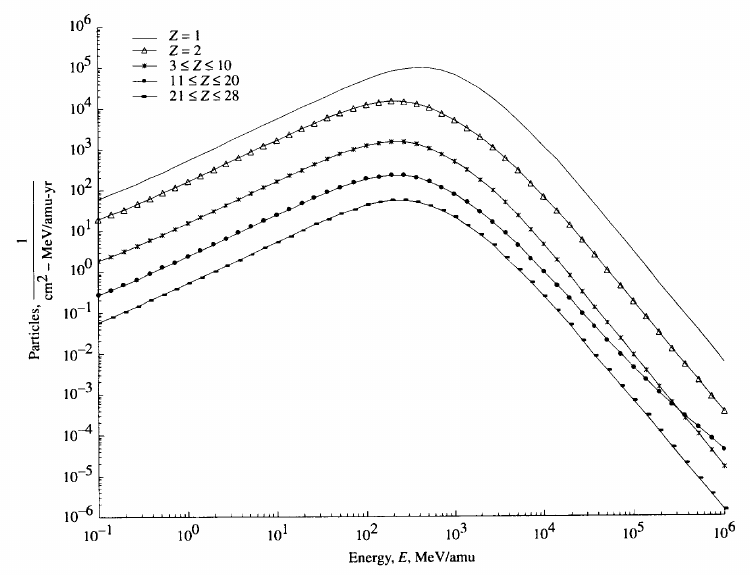Difference between revisions of "Cosmic rays"
m (Added information on particle types.) |
|||
| Line 1: | Line 1: | ||
| + | Cosmic rays are high energy particles that are part of the background radiation in space. Most cosmic rays are absorben in the Earht's atmosphere and do not reach the planet's surfacae. On Mars, cosmic rays are not absorbed as the atmosphere is too thin, and radiation protection is required to protect habitats. | ||
== Composition == | == Composition == | ||
Cosmic radiation comprises 85% protons, 14% alpha particles, and 1% heavy ions.<ref>Schimmerling W. (2011, Feb 5). The Space Radiation Environment: An Introduction. <nowiki>https://three.jsc.nasa.gov/concepts/SpaceRadiationEnviron.pdf</nowiki></ref> | Cosmic radiation comprises 85% protons, 14% alpha particles, and 1% heavy ions.<ref>Schimmerling W. (2011, Feb 5). The Space Radiation Environment: An Introduction. <nowiki>https://three.jsc.nasa.gov/concepts/SpaceRadiationEnviron.pdf</nowiki></ref> | ||
Revision as of 09:09, 5 August 2019
Cosmic rays are high energy particles that are part of the background radiation in space. Most cosmic rays are absorben in the Earht's atmosphere and do not reach the planet's surfacae. On Mars, cosmic rays are not absorbed as the atmosphere is too thin, and radiation protection is required to protect habitats.
Composition
Cosmic radiation comprises 85% protons, 14% alpha particles, and 1% heavy ions.[1]
Energy

Energy distribution of cosmic radiation, as measured during the 1977 solar minimum.[2]
References
- ↑ Schimmerling W. (2011, Feb 5). The Space Radiation Environment: An Introduction. https://three.jsc.nasa.gov/concepts/SpaceRadiationEnviron.pdf
- ↑ Kim MY, Thibeault SA, Simonsen LC, Wilson JW. (1998). Comparison of Martian Meteorites and Martian Regolith as Shield Materials for Galactic Cosmic Rays. NASA TP-1998-208724. http://hdl.handle.net/2060/19980237030






